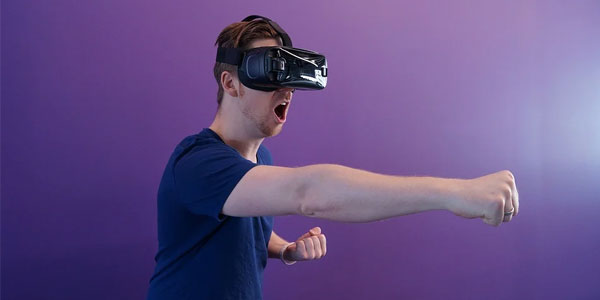
Virtual technology has been in development for a long time, with actual applications in the commercial sector mainly for simulation purposes becoming available in the 70's. However, it's still quite struggling to increase its mainstream popularity. But what are the reasons why virtual technology is still not that common?
What Is Virtual Reality?
It's been almost six years since virtual reality (VR), the simulator of experiences, was introduced to the masses. The biggest application of virtual technologies is in entertainment in the form of games. The term "VR gaming" is typically used to describe computer games with virtual reality technology that offers players a first-person perspective of the game.
The most distinct type of virtual reality technology is immersive. This means the view in front of your eyes is changed when you move your head. The simulation was created to provide real-world experience with the help of various accessories, such as headsets, glasses, and handhelds.
With not too many games supporting it, VR game developers are still finding it challenging to increase the demand for them. That said, implementing them in existing games does have the potential to improve the user experience.
Online casino games, for instance, have become incredibly popular, with JackpotCity online casino leading the industry. While these games don't include virtual reality, it's easy to see how they could really shine with VR technology. Some of the more famous games that do support VR technology are Star Wars: Squadrons, Falcon Age, Pistol Whip, Iron Man VR, Beat Saber, Star Trek: Bridge Crew, and Batman: Arkham VR.
Why Is VR Still Not That Popular?
While VR has gained more attention during the last years, it has faced a significant decrease as well. Companies have been looking into hardware solutions to upgrade the games and bring a more balanced experience. Standard virtual reality systems use headsets for visual immersion into multi-projected environments, and they create realistic sounds, images, and sensations to simulate the physical presence. There are also handhelds and wearables which offer tactile sensations. The main reason why virtual reality is not thriving among consumers stems from the use of those accessories.
Physical Discomfort
Many players have reported headaches, nausea, dizziness, and eye strain. These adverse effects are commonly caused by the headset, lenses, and the induced motion, which are all included in most known VR experiences. Motion sickness and other repercussions are explained by the fact that the players' eyes signal the brain that they are walking, while the body knows it is standing still.
Uncomfortable Headsets
Another reason why virtual reality is not preferred over standard video games is that the headsets have been found clunky and uncomfortable. Many VR users encountered discomfort due to the sounds and noise cancellation in the headphones. Due to the diversity in users, the headset needs to be able to fit various head shapes and sizes. So in the case of it not fitting accurately, pain and headaches can easily occur.
Lack of Creativity
Besides the physical aspect, another possible turnoff can be that many current offerings lack imagination and creativity. Creating virtual reality versions of existing games is very common in order to bring more impact. However, it often doesn't deliver the desired results because the conviction doesn't live up to the expectations of the players.
Bottom Line
Despite the limitless future of virtual technology, it is still facing some barriers that need overcoming. Design choices and lack of comfort in the user experience has slowed down its growth in popularity. The main challenge is convincing users to prefer immersing themselves in a virtual experience over reality. At the end of the day, it is up to the developers to come up with new technological solutions to the issues that have arisen and make the VR experience more comfortable and compelling.

Comments
Leave a Comment